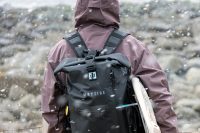DRY BAG
Sardinia
After spending the past few New Year’s on Sardegna, we’ve put together a collection of photos, tips, and insights about this incredible island. Sardinia is a van travel paradise for nature lovers. With its sparsely populated, wild landscapes and breathtaking beauty, the island offers endless opportunities for exploration. Sardinia rugged terrain makes it easy to find peaceful spots away from the crowds. It is also big enough to always offer some new corner to discover. So for those who prefer nature to cities and parties—whether it’s surfing, mountain biking, climbing, or hiking—Sardinia should definitely be on your bucket list.




